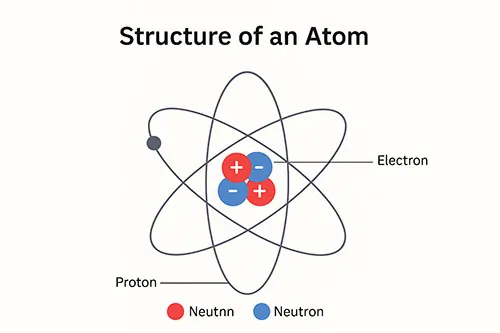Different Branches of Science and What They Teach Us
Science is a great subject to study because it helps us learn about the world around us. It tells us the secrets of the universe, nature, and even life itself. This guide talks about the main branches of science, what they teach us, and how they can help students who are interested in them get interesting jobs. We’ll also add useful pictures, fun worksheets, quizzes, and common questions to make learning even more fun.
1. Introduction to Major Science Branches
There are many main branches of science, and each one looks at a different part of our world. The main branches are physics, chemistry, and biology. We also have Earth Science, Astronomy, and Interdisciplinary Sciences, which combine things from different fields.
This is a picture that shows the main branches of science:
![[Infographic: Major Branches of Science]
Science
├── Physics
├── Chemistry
├── Biology
├── Earth Science
├── Astronomy
└── Interdisciplinary Sciences](https://www.kidsworldfun.com/blog/wp-content/uploads/2025/09/major-branches-of-science.webp)
We examine nature, matter, life, and the universe through each discipline.
2. Physics, Chemistry, and Biology Overview
Physics: The Science of Matter and Energy
Physics is the study of matter, energy, and the basic forces that govern them. It helps us understand how things move, why things fall, and how electricity powers our devices.
Some concepts in physics are:
- Newton’s Laws of Motion and Force
- Electricity and magnetism
- Thermodynamics
- Optics and light
Common Physics Topics
| Topic | What It Explains |
| Newton’s Laws | How things move when you push them |
| Electricity & Magnetism | How magnetic fields and currents work together |
| Thermodynamics | Heat, saving energy |
| Optics | Behavior of light and lenses |
Chemistry: The Science of Matter’s Composition
Chemistry is the study of how different things that make up matter work together. It teaches us about the periodic table, how molecules are put together, and how chemicals interact with each other.
Examples of Chemistry Concepts:
- Chemical reactions
- The structure of atoms
- Table of Elements Periodically
- pH levels, acids, and bases

Biology: The Science of Life
Biology teaches us about all kinds of living things, from simple bacteria to ecosystems that are very complicated. It talks about genetics, the human body, and how life works.
Biology Concepts in Practice:
- The structure and function of cells
- Genetics and inheritance
- The structure and function of the human body
- Evolution and natural selection
Examples of Biological Studies
| Field of Study | What It Focuses On |
| Microbiology | Study of tiny living things |
| Genetics | DNA structure and inherited characteristics |
| Ecology | Connections between ecosystems |
| Human Physiology | How organs and systems work |
3. Earth Science and Astronomy
Earth Science: Understanding Our Planet
Earth Science looks at the planet’s physical structure, atmosphere, and events that happen on it, such as earthquakes and volcanoes. It teaches us about problems with the environment and natural resources.
Key Aspects of Earth Science:
- The study of rocks and the Earth’s crust is called geology.
- Meteorology is the study of how the weather changes.
- Oceanography is the study of the oceans.
- Environmental Science (how people change the Earth)
![Infographic: Earth Science Fields
[Earth Science]
├── Geology
├── Meteorology
├── Oceanography
└── Environmental Science](https://www.kidsworldfun.com/blog/wp-content/uploads/2025/09/earth-science-fields.webp)
Astronomy: Exploring the Universe
Astronomy is the study of space things like stars, planets, and galaxies. It tells us how to get around in space, where the universe came from, and what black holes are.
Key Concepts in Astronomy:
- The Solar System‘s Structure
- Stars and Galaxies
- Things that happen in space and black holes
- Tools for looking into space
![Diagram: Solar System Layout
[Sun] → Mercury → Venus → Earth → Mars → Jupiter → Saturn → Uranus → Neptune](https://www.kidsworldfun.com/blog/wp-content/uploads/2025/09/solar-system-layout.webp)
4. Interdisciplinary Sciences
Interdisciplinary sciences use information from more than one branch of science to solve tough problems. Students who want to do cutting-edge research really like these areas.
Some fields that cross disciplines are:
- Biochemistry is the study of both biology and chemistry.
- Geophysics is the study of the Earth’s physical properties and structure.
- The study of the environment includes biology, chemistry, and earth science.
- Astrobiology is a field that combines biology and astronomy.
Interdisciplinary Science Examples
| Field | Combination of Disciplines |
| Biochemistry | Biology + Chemistry |
| Astrobiology | Biology + Astronomy |
| Geophysics | Geology + Physics |
| Environmental Science | Biology + Chemistry + Earth Science |
5. Jobs in Science Fields
There are a lot of different science careers that students can choose from. These jobs not only let you help medicine and technology move forward, but they also give you important work in research, education, and business.
Popular Science Careers:
| Career | Branch of Science | Job Description |
| Physicist | Physics | Studies matter, energy, and the universe |
| Chemist | Chemistry | Analyzes chemical reactions and creates new compounds |
| Biologist | Biology | Studies living organisms and ecosystems |
| Geologist | Earth Science | Examines Earth’s structure and processes |
| Astronomer | Astronomy | Studies celestial objects and the universe |
| Environmental Scientist | Interdisciplinary Science | Studies environmental issues and sustainability solutions |
6. Worksheets and Fun Facts
Fun Worksheet Sample
Question 1: How many atoms are in carbon?
Question 2: What are two gases that studied in Physics?
Question 3: Which planet is known as the “Red Planet”?
Answer Key:
- 6
- Oxygen, Nitrogen
- Mars
Fun Facts
- Light moves at a speed of about 299,792 kilometers per second.
- About 71% of the Earth’s surface is water.
- DNA is about 3 billion base pairs long and tells cells how to make things that are alive.
7. Quiz and Review
A Short Quiz:
- What area of study looks at stars and planets?
a) Physics
b) Biology
c) Astronomy - What does a geologist study?
a) Living things
b) Earth’s structure and rocks
c) Chemical reactions - What is the main point of chemistry?
a) Matter and its reactions
b) How the human body works
c) How the solar system is built
Answers:
c) Astronomy
b) Earth’s structure and rocks
a) Matter and its reactions
8. Frequently Asked Questions (FAQs)
Q1: What are the most popular scientific fields among students?
Physics, Chemistry, Biology, Earth Science, and Astronomy are some of the most popular subjects. You can use these subjects in a lot of different ways, and they can lead to a lot of different jobs.
Q2: Why are interdisciplinary sciences so important?
A2: They help people with different skills work together to find solutions to tough problems. Biotechnology and ways to protect the environment are some of the new ideas that have come up.
Q3: Can you study more than one science subject at the same time?
A3: Yes, a lot of colleges and universities offer interdisciplinary courses or the chance to double major, which lets students learn about more than one area of science.
Q4: Is there a lot of work in science?
A4: Yes, for sure. New technology is making jobs in research, healthcare, engineering, and environmental science grow quickly.
9. Conclusion
Studying different branches of science can teach you a lot of new things and help you find work. Science helps us learn about how things work. This could be the tiny particles studied in Physics, the chemical processes studied in Chemistry, or the complicated systems studied in Biology.
For students, the variety of science fields for students means there are countless paths to follow. Astronomy is full of mysteries about space, and Interdisciplinary Science helps people find ways to solve problems with the environment.
Embrace your curiosity, take quizzes, solve worksheets, and learn fun facts to make your learning journey more fun. You are the future of science because you are a young explorer who wants to learn about the secrets of the universe.



